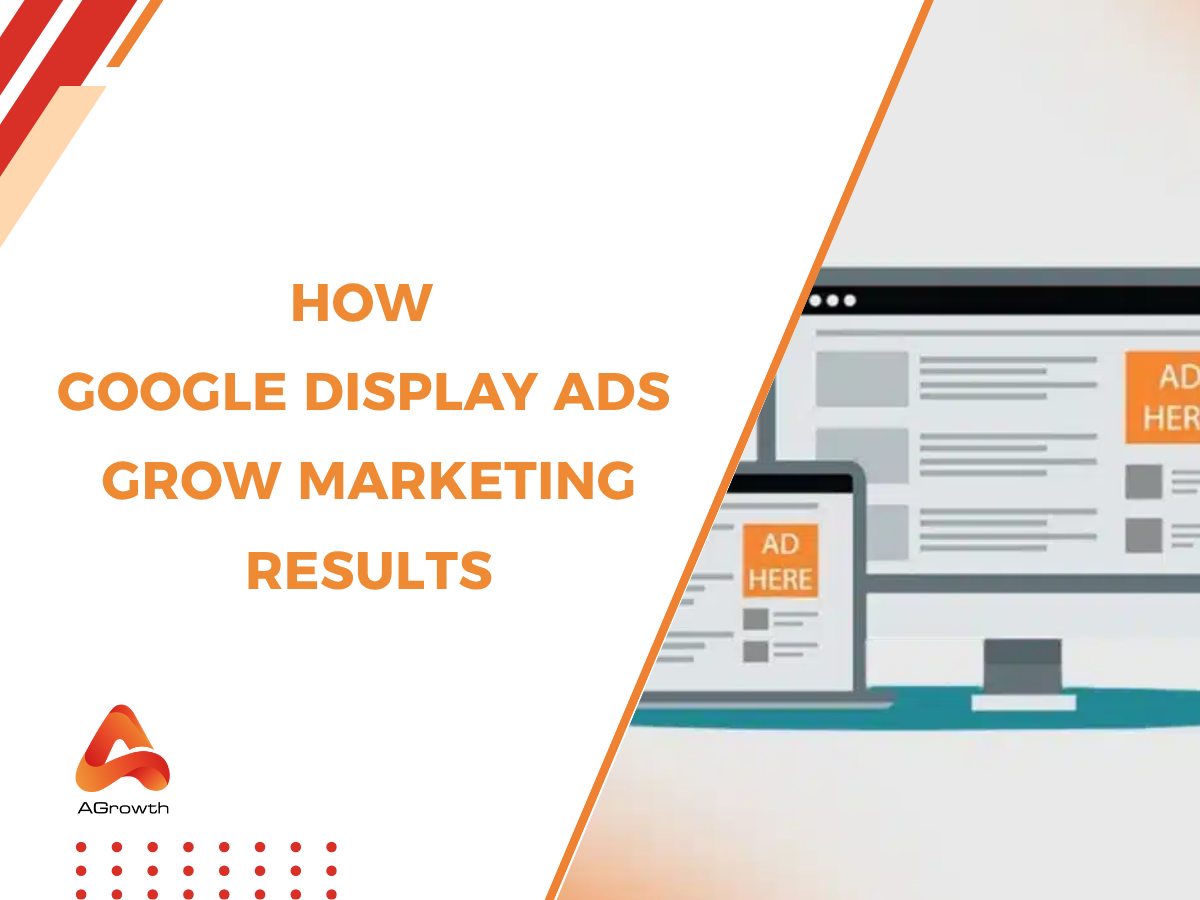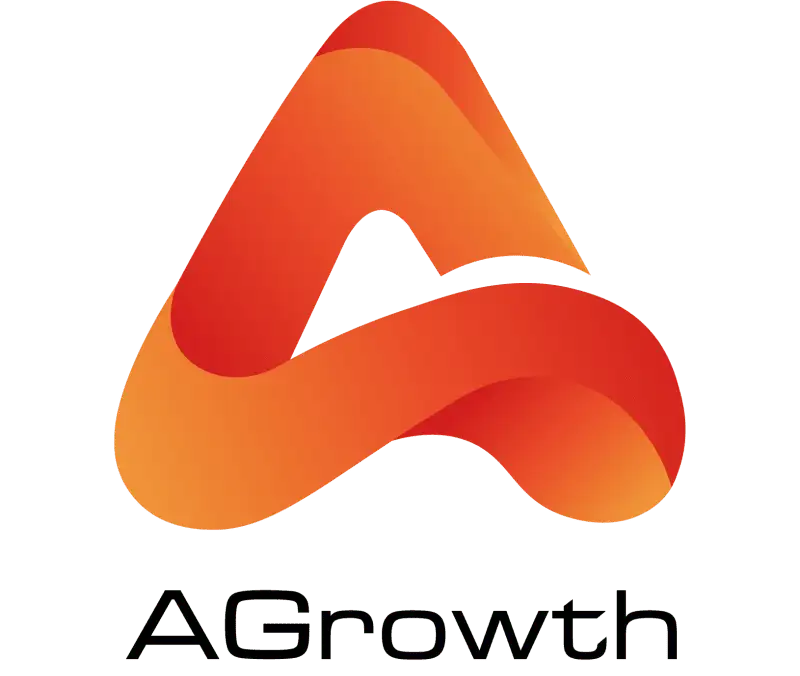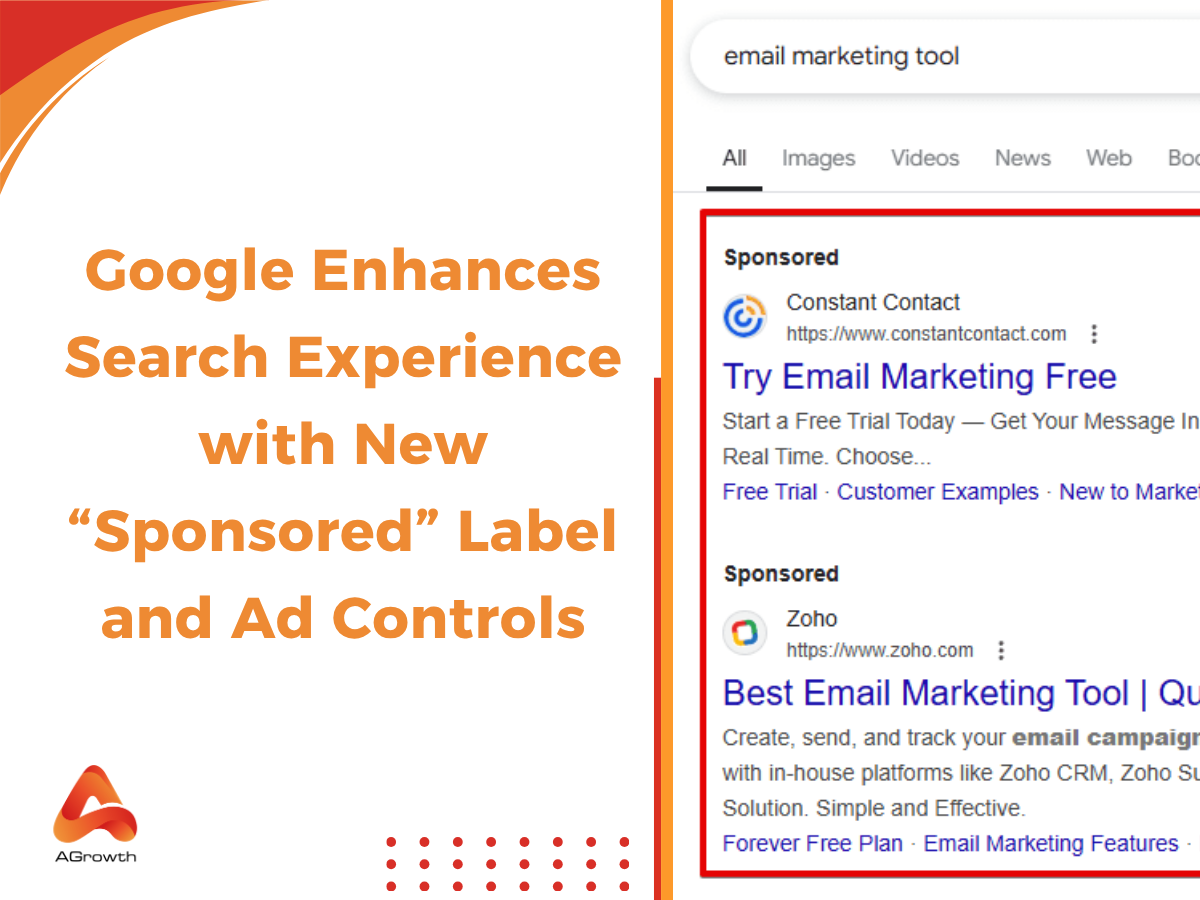
Table of Contents
How Google Display Ads Grow Marketing Results for Advertisers: Strategies for Success
Reaching the right audience at the right time can make all the difference in today’s competitive digital landscape. Google Display Ads offer us a powerful way to boost brand visibility and connect with potential customers through eye-catching banners, images, text, and video formats. With billions of websites in the network, our ads can appear where our audience spends their time, maximizing exposure and engagement.
What sets Google Display Ads apart is the ability to track every click, impression, and conversion in real time. We can measure key metrics like clickthrough rates and ROI, allowing us to fine-tune our campaigns for better results. By leveraging creative formats and data-driven strategies, we can drive more clicks, increase conversions, and eventually grow our marketing outcomes.
How Google Display Ads Work
Google Display Ads deliver our creative messages across a vast network of websites, apps, and videos. The Google Display Network (GDN) reaches over 2 million sites, giving us access to more than 90% of global internet users. Ads appear in various formats including banners, text, images, and video, letting us adapt to different content environments and user behaviors.
Targeting with Google Display Ads aligns our campaigns with relevant audiences based on demographics, interests, browsing history, and remarketing lists. For example, custom intent audiences, affinity audiences, and in-market segments refine our reach, ensuring our ads display to people most likely to take action.
Bidding strategies let us control costs and optimize for clicks, impressions, or conversions. Smart Bidding solutions in the platform use machine learning, analyzing real-time data to adjust bids and maximize campaign goals.
Performance tracking relies on integrated analytics tools that measure impression counts, click-through rates, conversion rates, and ROI. We continuously adjust targeting, creative elements, and budget allocation using these insights, driving incremental improvements in campaign results.

How Can Google Display Ads Help Advertisers Improve Their Marketing Outcomes?
Google Display Ads support advertisers in strengthening marketing outcomes by enabling precision targeting, expanding audience reach, and using real-time data for campaign optimization. The platform's integrated features give us effective tools to connect with potential customers at every stage of the buying process.
1. Massive Scale
Google Display Ads give us access to a network that reaches over 90% of internet users globally. Display placements appear on more than 35 million websites and apps, letting us consistently share our brand with large, diverse audiences.
2. Increase Conversions
Google Display Ads improve our conversion rates with advanced features such as smart campaigns and retargeting. Smart Display campaigns deliver a 20% conversion increase at the same CPA, and retargeting display ads boost conversions by up to 70% compared to initial touchpoints.
3. Harnessing Signal
Google Display Ads use behavioral and contextual signals to help us target users based on browsing habits, app usage, and website interactions. These insights enable us to create relevant audience segments and deliver more personalized messaging.
4. Automatic Targeting
Automatic targeting options in Google Display Ads let us efficiently reach audiences based on past campaign data and machine learning. These tools adjust targeting settings automatically, maximizing our reach and improving campaign performance without extra manual effort.
5. Similar Audience and In-Market Audience
Google Display Ads offer "Similar Audience" and "In-Market Audience" targeting to refine our reach. Similar Audience targets users whose interests and actions align with our existing customers, while In-Market Audience focuses on individuals actively researching products or services like ours.
6. Remarketing
Remarketing through Google Display Ads lets us reconnect with users who've previously visited our site or engaged with our brand. These ads help keep our brand top-of-mind and drive repeat visits, enhancing the likelihood of conversion through sustained engagement.
7. Boost Traffic
Google Display Ads drive high volumes of traffic to our sites by presenting visually compelling messages across platforms and devices. This reach supports customer acquisition strategies and brings more potential leads into our marketing funnel.
8. Generate Higher Quality Leads
Google Display Ads help us generate higher quality leads by combining advanced audience targeting with retargeting strategies. The use of interest data and predictive analytics means we can focus efforts on prospects most likely to convert, improving both lead quality and campaign ROI.
|
Feature |
Benefit |
Data Point |
|
Network Reach |
Access to broad audience |
90% of internet users, 35M+ sites/apps |
|
Smart Display Conversion Lift |
Higher conversions at same CPA |
20% increase |
|
Retargeting Conversion Increase |
More conversions from re-engaged users |
Up to 70% more conversions |
|
Audience Targeting |
Precision and relevance |
In-market/Similar Audiences, auto-targeting |
|
Lead Quality |
Higher propensity to convert |
AI-driven segmentation |

Available options for Google Display Ads
We access a diverse set of options within Google Display Ads, allowing us to tailor our campaigns to specific objectives and audiences.
-
Ad Formats
We choose from image ads, video ads, rich media, and catalog ads to align creative output with campaign needs. Image ads display static visuals, video ads offer immersive engagement, rich media adds interactive features, and catalog ads showcase multiple products within one ad unit.
-
Targeting Options
We leverage demographic targeting, interest-based audiences, contextual targeting, and retargeting to refine our audience selection. Demographic targeting selects users by age, gender, or parental status. Interest-based targeting finds users aligned with topics such as travel or fitness. Contextual targeting pairs ads with relevant content based on keywords and site themes. Retargeting re-engages site visitors, which increases conversion rates by up to 70% in retargeted campaigns.
-
Automation and Smart Display Campaigns
We automate campaign optimization using Smart Display Campaigns powered by machine learning. Automation analyzes real-time data to optimize bidding, targeting, and creative placements. Smart campaigns aim to maximize conversions while keeping costs efficient, with Display Ads averaging a CPC of $0.63.
-
Performance Tracking Tools
We monitor our campaigns with analytics for impressions, clicks, CTR, conversions, and ROI. These tools help us assess campaign health, make incremental improvements, and allocate budget for the best outcomes.
Available display ad options support brand awareness, lead generation, remarketing, and direct response, ensuring we align our strategy with defined marketing results.
Targeting the Right Audience
Effective audience targeting with Google Display Ads strengthens campaign performance by connecting brands to users with the highest potential for engagement and conversion. Leveraging multiple targeting strategies, we increase the relevance of every impression and maximize return on ad spend.
Demographic and Interest Targeting
Demographic and interest targeting in Google Display Ads refines audience selection using specific age, gender, household income, and affinity segments. By segmenting users based on these parameters, we ensure our ads reach those with the highest likelihood of interest in our offerings. For example, targeting users in particular age groups or those who show strong online behaviors related to travel or fitness improves engagement by up to 180% compared to non-targeted campaigns [1]. This data-driven precision amplifies relevance and drives measurable uplift in click-through and conversion rates.
Remarketing and Similar Audiences
Remarketing and similar audiences with Google Display Ads reconnect our brand with users who have interacted with our website or app and find new users similar in profile to our best customers. In remarketing, ads prompt return visits and reinforce brand recall among warm leads, which boosts chances for repeat conversions. Similar audiences expand reach, targeting users who demonstrate behaviors and interests that align closely with our converting customers. We grow our customer base more efficiently by layering these segments into our campaigns.
Automatic and Automated Targeting
Automatic and automated targeting features in Google Display Ads employ advanced algorithms and AI to continuously optimize audience reach and efficiency. Automatic targeting adjusts placements in real-time, using campaign goals and performance data as input. Automated targeting enables us to set customized rules for bidding, segmentation, and creative rotations, while Google's machine learning adapts and optimizes audience settings to surface the highest-performing segments. With campaign automation, we maximize exposure and conversions without labor-intensive manual refinements. This seamless optimization sustains campaign momentum and drives ongoing marketing results.
Targeting Options for Google Display Ads
Google Display Ads offer us advanced targeting choices, connecting our campaigns to the right audiences for better marketing results. Accurate targeting allows us to deliver relevant creatives and messaging across billions of placements, strengthening campaign reach and efficiency.
-
Demographic Targeting
Demographic targeting lets us select audiences by factors like age, gender, or household income. For example, we can target women aged 25–34 or high-income users, aligning ads with groups that reflect our campaign objectives.
-
Interest and Affinity Targeting
Interest targeting enables us to reach users who show a sustained interest in relevant topics, such as fitness enthusiasts, frequent travelers, or tech shoppers. Affinity audiences allow us to extend brand reach across users with long-term engagement in these areas.
-
In-Market Targeting and Custom Intent
In-market targeting finds users actively researching or considering purchases in product or service categories. Custom intent lets us build segments around users searching for specific keywords, like "best noise-canceling headphones" or "2024 car insurance".
-
Contextual Targeting
Contextual targeting places ads on content closely related to our messaging. For instance, a home decor ad may appear next to articles or forums on interior design, maximizing relevance and engagement.
-
Placement Targeting
Placement targeting gives us control over specific sites, apps, or videos for ad delivery. We can choose trusted publishers or high-traffic platforms relevant to our audience, refining exposure and minimizing wasted impressions.
-
Remarketing
Remarketing reconnects us with users who previously interacted with our website or app. If a visitor viewed our product page without converting, remarketing ads can encourage a return and complete the purchase.
-
Similar Audiences
Similar audience targeting identifies new users whose behaviors and interests resemble our highest value customer segments. By expanding reach to these lookalike users, we increase conversions and net-new leads.
-
Automated and Smart Targeting
Automated targeting uses machine learning to continuously refine ad placements based on campaign goals and best-performing segments. Smart display campaigns help us optimize creative, bidding, and audience selection, adapting in real time to maximize efficiency.
These targeting options position our Google Display Ads to connect with the most relevant users at scale, supporting performance, brand awareness, and lead generation initiatives. When we combine granular targeting with automation, we capture more value and achieve measurable improvements across campaigns.
Tips On Creating Effective Bidding Strategies
Automated bidding increases campaign efficiency by using machine learning to adjust bids in real time. Automated strategies like Target CPA, Maximize Conversions, and Maximize Conversion Value optimize for conversions by analyzing thousands of signals such as device, location, and time of day. If conversion tracking is active, automated bidding dynamically raises or lowers bids to align with our goals, minimizing manual intervention and saving time.
Manual bidding offers greater budget control since we decide precise bid amounts for each impression or click using metrics like cost-per-click (CPC). This strategy becomes effective for granular budget management and testing specific placements or audience segments. Manual bidding requires more oversight and ongoing adjustments to sustain optimal performance.
Hybrid strategies combine automated and manual bidding, which allows us to maintain control over critical campaigns while benefiting from machine learning for routine bid adjustments. For instance, we can apply manual bidding to high-value ad groups and automated bidding to broad, exploratory campaigns, increasing ROI through efficiency and control.
Budget optimization maximizes advertising impact by reallocating spend based on performance data. If ads demonstrate high returns, we scale investments to reach wider audiences, while decreasing spend on underperforming ads. Ongoing data analysis, including clickthrough rates and conversion costs, guides our bidding strategy and identifies opportunities for improvement.
Viewable CPM bidding improves visibility by charging costs only for visible ad impressions. This approach enhances brand awareness since we pay for ads that reach users in prominent, viewable positions—crucial for campaigns with reach and exposure objectives.
Target-based bidding such as Target CPA automates bid adjustments to achieve a specific cost per acquisition, while Maximize Conversion Value focuses on increasing the total value from conversions, leveraging real-time data to optimize results.
|
Bidding Strategy |
Key Feature |
Best Use Case |
|
Automated Bidding |
Real-time machine learning bid adjustments |
Scaling conversions |
|
Manual Bidding |
Full control over bid amounts |
Specific audience segments |
|
Hybrid Approach |
Combines automation with manual oversight |
Balancing control & scale |
|
Viewable CPM |
Pay only for visible ad impressions |
Brand visibility |
|
Target CPA |
Achieve a set cost per conversion |
Consistent CPA goals |
|
Maximize Conversion Value |
Optimize for highest total conversion value |
Revenue-driven campaigns |
Carefully selecting a suitable bidding strategy shapes the profitability and reach of Google Display Ads campaigns, enabling us to act fast in a dynamic advertising landscape and connect with high-value audiences.
Evaluating and Improving the Ad Campaign
Performance evaluation involves analyzing core metrics within our Google Display Ads campaigns. Key indicators include click-through rate (CTR), conversion rate, and return on investment (ROI). Google's analytics platform supplies granular reporting for these metrics, letting us track effectiveness and diagnose weak points across ads or audience segments.
Adjustment relies on findings from these analytics insights. Campaigns that underperform in CTR or conversion rates guide us to refine creative assets, optimize calls to action, or experiment with different ad formats such as banners, image ads, or video placements. We adjust audience targeting by analyzing demographic, interest, or behavioral data to sharpen reach and relevance.
A/B testing compares performance of different creatives, copy, or targeting options. We run experiments to determine which combinations drive higher impressions, engagement, and conversions. Results from these split tests inform our ongoing optimization process.
Automation further enhances campaign refinement. Smart Display Campaigns and automated bidding strategies use Google’s machine learning to adjust bids and placements in real time. This increases cost-effectiveness and conversion efficiency, especially for campaigns prioritizing high-quality leads or maximizing budget utilization.
Regular remarketing engages visitors who previously interacted with our brand but didn't convert. We adjust remarketing lists by segmenting users based on site behaviors, tailoring messages to specific user groups for increased return visits and conversion probability.
Budget allocation is continuously reviewed using data on spend, reach, and performance trends. We shift investments toward high-performing ads, channels, or audience groups, while pausing or reworking underperforming segments, reinforcing overall campaign effectiveness.
Continuous measurement guarantees incremental improvement. By tracking key metrics and leveraging analytics, A/B testing, automated strategies, and dynamic budget adjustments, we create a feedback loop that strengthens our Google Display Ads results over time.
|
Metric |
Purpose |
|
Click-Through Rate (CTR) |
Measures engagement and relevance of creatives |
|
Conversion Rate |
Indicates effectiveness in driving user action |
|
Return on Investment |
Calculates overall profitability of ad spend |
|
Cost Per Click (CPC) |
Assesses cost-efficiency of traffic acquisition |
|
Impressions |
Quantifies ad visibility across Google’s Display Network |
Each vector—analytics, creative optimization, targeting precision, automated bidding, and remarketing—aligns with our focus on data-driven campaign improvement for sustained marketing growth.
Frequently Asked Questions
What are Google Display Ads?
Google Display Ads are visual ads—like banners, images, and videos—shown across over 2 million websites and apps. They help businesses reach new and existing customers online, boosting brand visibility and driving engagement.
How do Google Display Ads increase brand visibility?
Google Display Ads reach over 90% of internet users globally, placing your ads on relevant sites and apps. This broad reach ensures your brand is seen by a vast and diverse audience, significantly increasing exposure.
What types of ads can be used with Google Display Ads?
You can use image ads, video ads, rich media ads, and catalog ads. These formats allow for creative flexibility to engage users and match your specific campaign objectives.
How does targeting work in Google Display Ads?
Google Display Ads offer targeting by demographics, interests, browsing behavior, and website content. Advertisers can also use remarketing and “Similar Audience” targeting to engage previous visitors and reach new prospects similar to existing customers.
What is remarketing, and how does it help?
Remarketing shows your ads to people who have previously visited your website. This increases the chances of re-engaging interested users and driving repeat conversions.
How does Google Display Ads optimize campaigns?
Real-time performance tracking and analytics tools allow advertisers to adjust targeting, creatives, and budgets. Automated features like Smart Bidding use machine learning to optimize campaigns for better results.
What are Smart Display Campaigns?
Smart Display Campaigns automate targeting, bidding, and ad creation using Google’s machine learning. This helps maximize conversions, reduce manual work, and improve overall campaign efficiency.
How do bidding strategies work in Google Display Ads?
Advertisers can choose automated bidding (where Google adjusts bids for best performance), manual bidding (for greater control), or hybrid options. Strategies like viewable CPM charge only for ads actually seen by users, maximizing efficiency.
How do you measure success with Google Display Ads?
Success is tracked through key metrics like click-through rate (CTR), conversion rate, and return on investment (ROI) using Google Analytics. Insights from these metrics help advertisers refine targeting and creatives for better results.
Can you control where Google Display Ads appear?
Yes, advertisers can select placements, such as specific websites or apps, and also use placement exclusions to avoid showing ads on unwanted sites, ensuring better control over brand safety.
What are the main benefits of Google Display Ads for businesses?
Main benefits include vast audience reach, precision targeting, multiple creative formats, real-time optimization, cost control, and the ability to retarget past visitors, all contributing to increased clicks and conversions.









Your comment